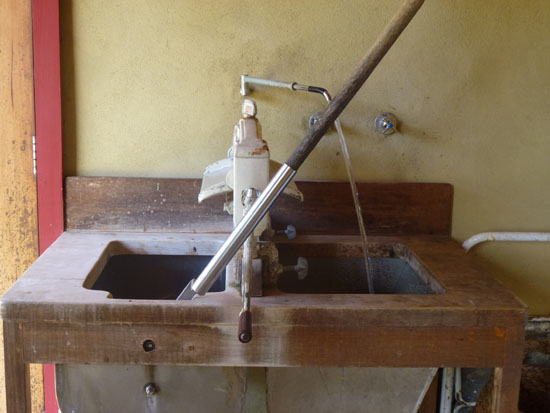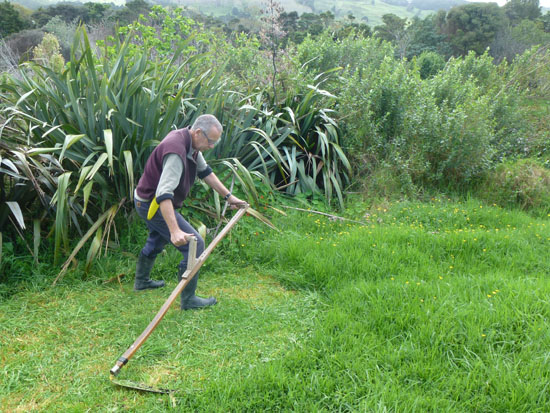Our idea was to generate as much energy as possible on site and at the same time keep our energy consumption low.
Our house is one of two at the village not connected to the national grid – we always liked the idea of being “independent” and of using renewable sources of energy where we can. When we looked at how much electricity we need, we arrived at about 2 kilowatts per day – this is about 10% of what a typical NZ household consumes. Our consumption is so low, because we don’t use electricity for heating water or rooms or for cooking. This means of course that we need other sources of energy for these: firewood and gas. It was and still is exciting to have our “own” power … and no power bills. This does not mean that our electricity is free – to set up our system has cost a similar amount to what it would have been to connect to the national grid at the time and over the years we implemented a number of improvements to the system.
As far as alternative systems go, our set up is very common: We are using photovoltaic panels to generate electricity which is then stored in a battery bank. We draw the electricity from there through an inverter for the freezer, lights, music systems, TV, computer and other appliances that we use.
We have upgraded our system in 2016 and now actually have two separate systems:
House: 6 Photovoltaic panels (1.5 kW peak) / 24 V – 800 Ahrs battery bank – Sine wave inverter.
Barn/Studio: 4 Photovoltaic panels (1.0 kW peak) / 24 V – 700 Ahrs battery bank – sine wave inverter.
We do have a 6 KVA Petrol Generator as a back up.
Refrigeration
We run a high efficiency chest freezer with our solar power system. In the chest freezer we freeze containers of water that we place in insulated drawers in our kitchen – these drawers are our fridge.
Washing Machine

Based on a hand operated washing machine in the Lehman’s catalogue, we had a washing machine built by a local engineer.
Scything

Wolfgang has become an expert in using a scythe to cut grass for mulch that we use around fruit trees and in the vegetable gardens. For him scything is poetry in motion – quiet, efficient and deeply satisfying.